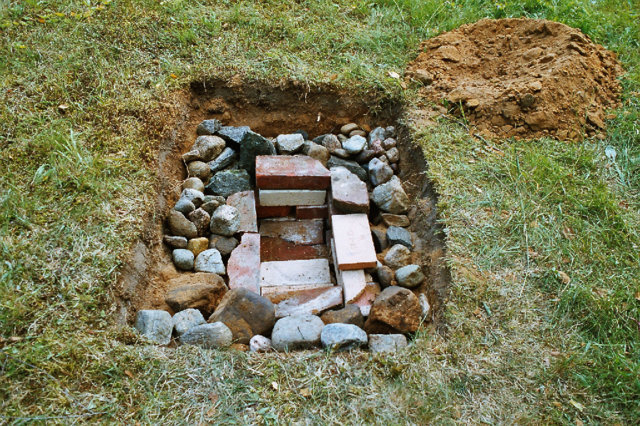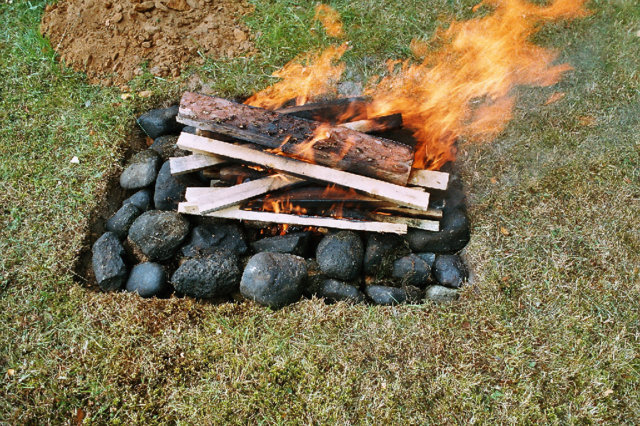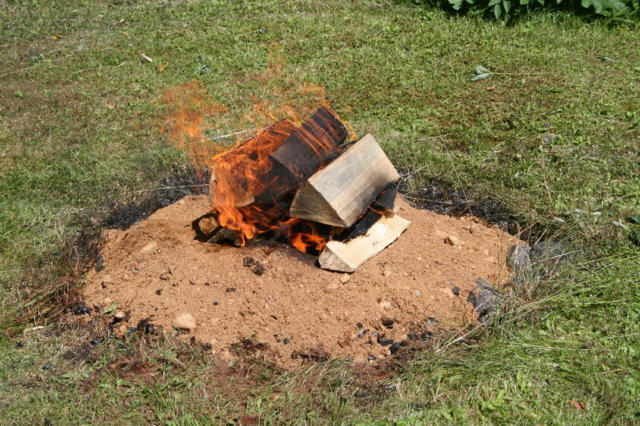[FONT=Arial, sans-serif]Hardtack (or hard tack) is a simple type of cracker or biscuit, made from flour, water, and sometimes salt. Inexpensive and long-lasting, it was and is used for sustenance in the absence of perishable foods, commonly during long sea voyages and military campaigns. The name derives from the British sailor slang for food, "tack". It is known by other names such as pilot bread (as rations for ship's pilots), ship's biscuit, shipbiscuit, sea biscuit, sea bread (as rations for sailors) or pejoratively "dog biscuits", "tooth dullers", "sheet iron", "worm castles" or "molar breakers". Australian and New Zealand military personnel knew them with some sarcasm as ANZAC wafer.[/FONT]
[FONT=Arial, sans-serif][/FONT]
[FONT=Arial, sans-serif]
[FONT=Arial, sans-serif]A Sailor's Diet[/FONT]
[FONT=Arial, sans-serif]2 1/2 cups old-fashioned or quick oats. [/FONT]
[FONT=Arial, sans-serif]3 cups unbleached flour. [/FONT]
[FONT=Arial, sans-serif]1 1/2 teaspoons salt. [/FONT]
[FONT=Arial, sans-serif]1 teaspoon baking soda. [/FONT]
[FONT=Arial, sans-serif]In a separate container, mix: [/FONT]
[FONT=Arial, sans-serif]1 1/2 cups buttermilk. [/FONT]
[FONT=Arial, sans-serif]3 tablespoons honey. [/FONT]
[FONT=Arial, sans-serif]1/2 cup melted shortening. [/FONT]
[FONT=Arial, sans-serif]Combine the two sets of ingredients. When the dough is thoroughly mixed, roll it out on a floured board to a thickness of about a quarter inch. Cut out circles of dough with a large drinking glass dipped in flour and put them on a lightly greased cookie sheet. Bake for about 5 1/2 minutes at 450° F. Let the hardtack cool on a wire rack.[/FONT]
[FONT=Arial, sans-serif]Traditional Recipes[/FONT]
[FONT=Arial, sans-serif]2 c Flower [/FONT]
[FONT=Arial, sans-serif]1/2 tb Salt (optional) [/FONT]
[FONT=Arial, sans-serif]1/2 tb Sugar (optional) [/FONT]
[FONT=Arial, sans-serif]1/2 c Water [/FONT]
[FONT=Arial, sans-serif]Mix together in an electric blender at medium speed until it has the consistency of playdough. Roll it out with a rolling pin to about 1/3" or so, the thinner [/FONT][FONT=Arial, sans-serif]the crisper, then cut it into 3 x 3 inch squares. I use the barrel of a ball point pen to punch 16 holes (4 x 4) in each square. Bake at 375° F on the first side for 20-25 minutes or until it turns a light brown color, then turn them over and bake for another 15-20 minutes.[/FONT][FONT=Arial, sans-serif] [/FONT]
[FONT=Arial, sans-serif]Hard Tack Recipe [/FONT]
[FONT=Arial, sans-serif]4 cups flour (preferably whole wheat)[/FONT]
[FONT=Arial, sans-serif]4 teaspoons salt[/FONT]
[FONT=Arial, sans-serif]Water (about 2 cups)[/FONT]
[FONT=Arial, sans-serif]Pre-heat oven to 375° F[/FONT]
[FONT=Arial, sans-serif]Makes about 10 pieces[/FONT]
[FONT=Arial, sans-serif]Mix the flour and salt together in a bowl. Add just enough water (less than two cups) so that the mixture will stick together, producing a dough that won’t stick to your hands. Mix the dough by hand then roll the dough out. Cut the dough into squares about 3 x 3 inches and 1/2 inch thick.[/FONT]
[FONT=Arial, sans-serif]Note: if the dough is to thick it will not dry properly.[/FONT]
[FONT=Arial, sans-serif]If dried well it will keep up to a year.[/FONT]
[FONT=Arial, sans-serif]After cutting the squares, press a pattern of four rows of four holes into each square. You can do this by using a bamboo skewer. Do not punch through the dough. The appearance you want is similar to that of a modern saltine cracker. Turn each square over and do the same thing to the other side.[/FONT]
[FONT=Arial, sans-serif]Place the squares on an ungreased cookie sheet in the oven and bake for 30 minutes. Turn each piece over and bake for another 30 minutes. The crackers should be slightly brown on both sides.[/FONT]
[FONT=Arial, sans-serif]Fresh crackers are easily broken but the more they dry the harder they get. [/FONT]
[/FONT]





 Im back.
Im back.


